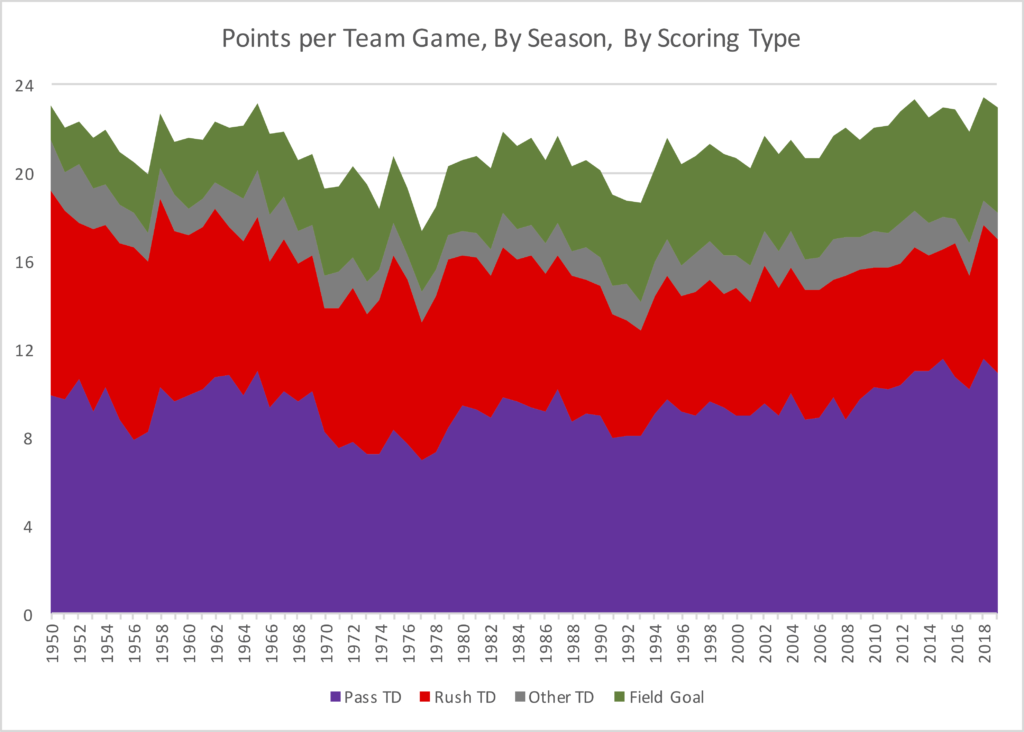Scoring soared in the aftermath of World War II, but quickly dropped off in the middle of the 1950s. Scoring fell to its nadir in 1977, prompting the 1978 rules changes regarding pass blocking and pass coverage. After another lull in the early nineties, scoring has steadily increased over the last twenty years. It reached a peak in 2013 and nearly matched that again in 2018, before a a slight dip in 2019. Take a look at the average points per game for all NFL teams (i.e., excluding the AFL) since 1950:

You might think that the increase in scoring is due to the passing game becoming more dominant in modern times, but that’s hardly the full story. There are more passing touchdowns now, but they have also to some extent just taken touchdowns that would have otherwise been rushing touchdowns. Over the last 5 years, teams have scored about 16.6 points per game on passing plus rushing touchdowns, if we assign 7 points to each touchdown. That’s noticeably higher than how things were in the ’90s and ’00s, and much higher than the ’70s, but it’s lower than NFL life was in the ’50s and much of the ’60s.
One undeniable fact of life is that field goals have become a much bigger part of the game. The graph below assigns 7 points to all passing, rushing, and other touchdowns, and 3 points to all field goals. It then shows how many points per team game have come from each of those four categories.
 Since the early ’50s, field goals have more than doubled, a function of rising field goal success rates and (because of the former) a rise in field goal attempts.
Since the early ’50s, field goals have more than doubled, a function of rising field goal success rates and (because of the former) a rise in field goal attempts.
Here’s the same data as above, but shown as a line graph rather than an area graph:

A significant number of field goal attempts are poor decisions, from an analytics perspective. As we see teams spend more time weighing these critical strategic decisions, I would suspect we would see fewer field goals. Of course, as offenses get better — or, rather, rules changes make offenses easier — we might see more field goals replace punts. In addition, changes to the kickoff rule could (should?) have a second order effect on these, too. With touchbacks being moved out to the 25-yard line, that also makes field goals less valuable (do you see why?).
But when we discuss how NFL scoring is greater than ever, it’s important not to forget the value of a field goal kicker. In 2019, Baltimore led the NFL with 531 points (33.2 points per game). The team’s kicker, Justin Tucker, hit 28 field goals, worth 114 points; the team averaged 27.9 points per game if you exclude all field goals.
Meanwhile, in 1958, Baltimore led the NFL with 381 points in a 12-game season (31.8 points per game). That team kicked just 5 field goals; without those, Baltimore still averaged 30.5 points per game.
